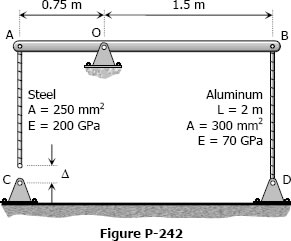Solution to Problem 272 Thermal Stress
Problem 272
For the assembly in Fig. 271, find the stress in each rod if the temperature rises 30°C after a load W = 120 kN is applied.
- Read more about Solution to Problem 272 Thermal Stress
- Log in to post comments





